
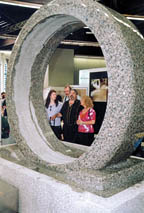
"This 12th Nuremberg natural stone exhibition in succession has impressively emphasized the high esteem enjoyed by the material natural stone on the worldwide building scene," said Walter Hufnagel, Director of Exhibition Management at N?rnbergMesse, which organizes the event. "This makes Stone+tec our company's largest exhibition in terms of size."
In spite of a difficult economic situation for the building industry in Germany as well as other parts of Europe and the world, visitors had a very positive outlook at the event, according to N?rnbergMesse. Over 60% of the visitors at Stone+tec 2001 assessed the present situation and future expectations as constant, with slight upward trends.
Around three-quarters of the trade visitors stated that they came from within Germany, especially from the states of Bavaria, Baden-W?rttemberg and North Rhine-Westphalia. The remaining 25% came from (in descending order): Europe, East Asia and North America. Attendance from Europe was dominated by Austria, Italy, Belgium and Poland, and the Asian countries with the highest attendance were India, China, Japan and Korea. Overall, the international mix of Stone+tec visitors increased slightly over the 1999 edition.
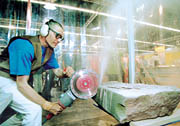
Quality attendance
Half of the visitors to the fair came from the craft trades, especially from natural stoneworking and stonemasonry firms. Another 20% came from other sectors of the industry, and 12% came from the wholesale trade. Apart from almost 50% self-employed proprietors and general managers, the visitors work mainly in manufacturing and production (37 %) and purchasing (32%). The share of architects and building planners at Stone+tec 2001 was over 5%.In addition to seeking information and reviewing new products, a total of 29% of the visitors came to Nuremberg with firm intentions to make a purchase at the fair. Moreover, nine out of ten visitors stated that they are directly involved in purchasing for their companies.
Eight out of ten visitors said that Stone+tec 2001 motivates them to use the new products presented at the exhibition, and over 98% of the trade visitors rated the exhibition, information, contacts, services and organization as impressive.
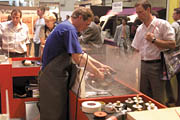
Exhibitor growth
This year, 1,251 exhibitors occupied over 50,000 square meters of net display space at Stone+Tec. In 1999, 1,188 exhibitors occupied a net display space of approximately 48,500 square meters. This represents a 5% growth for both figures for Stone+tec 2001 over the 1999 event.Two-thirds of the exhibitors came to Nuremberg from countries outside Germany. The strongest exhibiting countries after Germany (430) were Italy (303), China (75) and Spain (67), followed by France (39), Austria (28) and India (25).
Well over half of all exhibitors assessed their overall success as "good to very good," and a further 35% deemed their success as "satisfactory." Other successful exhibiting criteria at Stone+tec 2001 were also noted, as well over 90% of the exhibitors made new business connections, and some 75% expect follow-up business. Immediately after this year's exhibition, over 70% of the exhibitors had already decided to participate again at Stone+tec 2003 in Nuremberg.
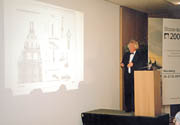
Special events
In addition to intensive dialog with exhibitors and a look at the variety of natural stone and stoneworking products, an outstanding highlight for many trade visitors was the special show, "StoneAmbience." As part of this event, 20 contractors worked over an area of 1,000 square meters to mix natural stone with other materials such as metal, wood and glass in fine design. These ranged from traditional to avant-garde and from familiar to unusual.Also, cathedral builders from all over Europe -- members of the Vereinigung Dombaumeister e.V. -- showed the past and present of their long-established craft in a special show with multimedia, text, photos and exhibits from their cathedral building lodges. The special show, "Living and Remembering," organized by the Bundesinnungsverband des Deutschen Steinmetz- und Bildhauerhandwerks (BIV) and the Deutscher Naturwerkstein-Verband (DNV) led the visitor along a "Waterfall of Life" with questions on up-to-date graveyard culture.
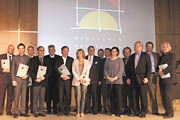
Outstanding achievement
The many awards presented during the exhibition also attracted great attention. Two awards in particular deserve highlighting, as they demonstrate the possibilities for natural stone used for building, and the importance of the material for historic buildings and contemporary architecture.The Peter Parler Award is presented every two years at Stone+tec for exemplary services rendered by stonemasons in the preservation of historic buildings and monuments. The award cites high-quality work on landmark buildings in natural stone under the aspects of conservation, craft restoration, creativity and material feeling. The award is divided into two prizes of equal value, the Creative Award and the Conservation Award. This year's Creative Award went to Dr. Michael Pfanner for the restoration of the Triumphal Arch in Munich, and the Conservation Award was shared between Eduard Schnell for the restoration of the monastery church of St. John the Baptist in Hechingen Stetten and Klaus Vollmar for the restoration of the hospice chapel of St. Peter and Paul in Nuremberg.
The German Natural Stone Awards were presented for the 10th time at Stone+tec 2001. Previous winners of these awards, worth a total of nearly $27,000 include such famous architects as Hans Hollein, Josef Paul Kleihues or Oswald Mathias Ungers. This architecture award, which is highly respected throughout Europe, went to Nuremberg for the first time for the new building of the New Museum for Art and Design, which opened in 2000. The winner of the German Natural Stone Award 2001 the architect Volker Staab of Berlin. According to the jury, chaired by Heinrich Pfeffer, President of the Bund Deutscher Architekten (BDA), Staab's exemplary design and structural application of natural stone on facades has created an outstanding example of modern building in historic surroundings. (For a complete look at the award winners, see " Distinguished stonework is honored in Germany.")
"The increasing popularity of Stone+tec shows that meeting the customers' requirements with new processes and high quality achieves success," says Kurt Bodewig, Federal Minister of Transport, Building and Housing. "The exhibition is not only a seismograph for the state of the natural stone branch, but also shows that the European city, which we are also making great political efforts to retain, maintain and redevelop, is still of model character."
The next Stone+tec takes place again in the Exhibition Centre Nuremberg from May 29 to June 1, 2003.
Editor's Note:
The figures for exhibitors and visitors are checked and certified by the Society for Voluntary and Independent Control of Fair and Exhibition Statistics (FKM), Cologne. To improve the comparability of the figures for exhibition visitors within the European exhibition branch, the FKM has created a new basis for calculating the number of visitors in Germany. The number of visitors is calculated according to the number of admissions to the exhibition site, with only one admission being counted per entrance pass per day; the number of visitors was previously determined from the number of entrance passes sold; permanent passes were previously only counted once, although they were actually used on several days.